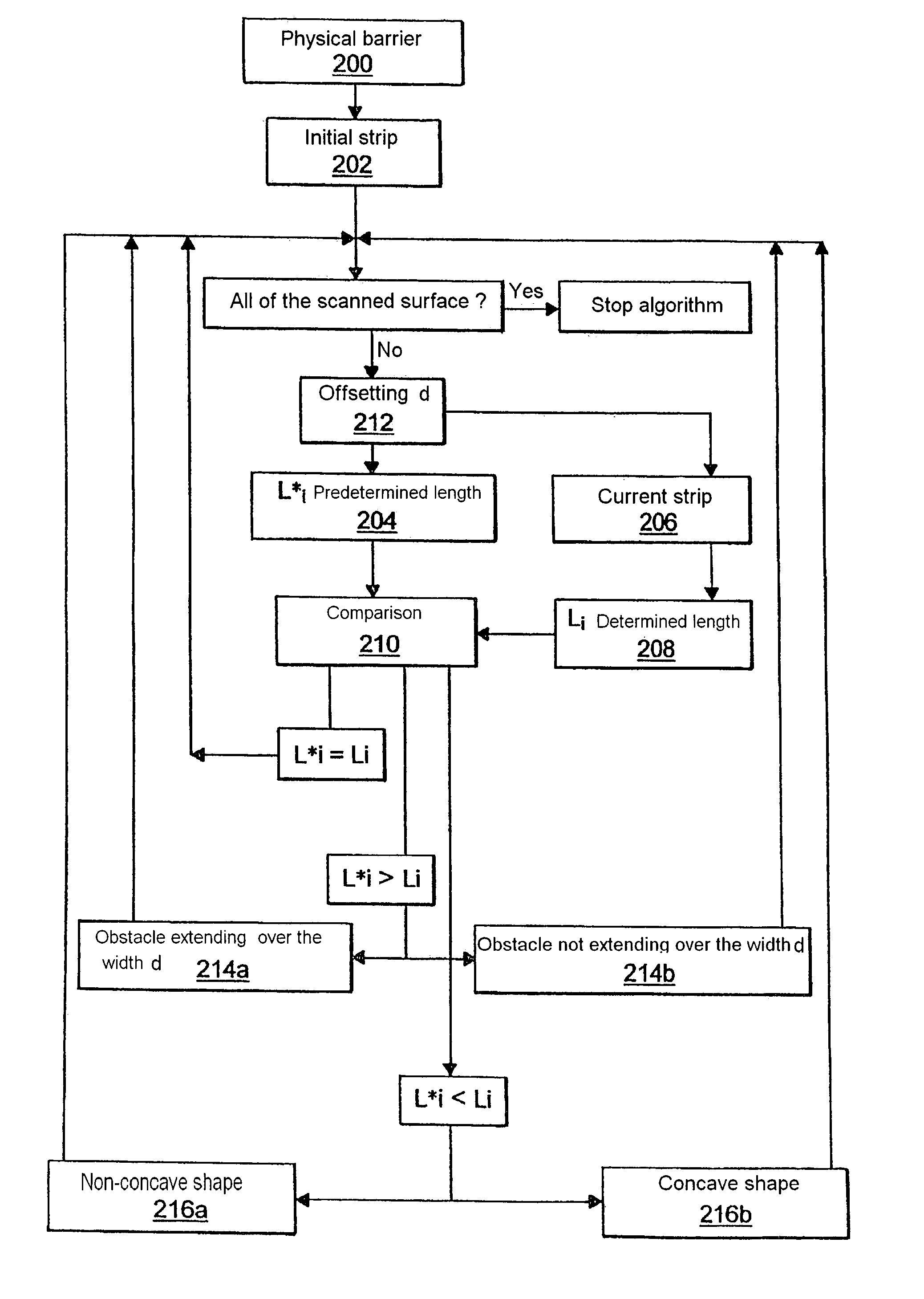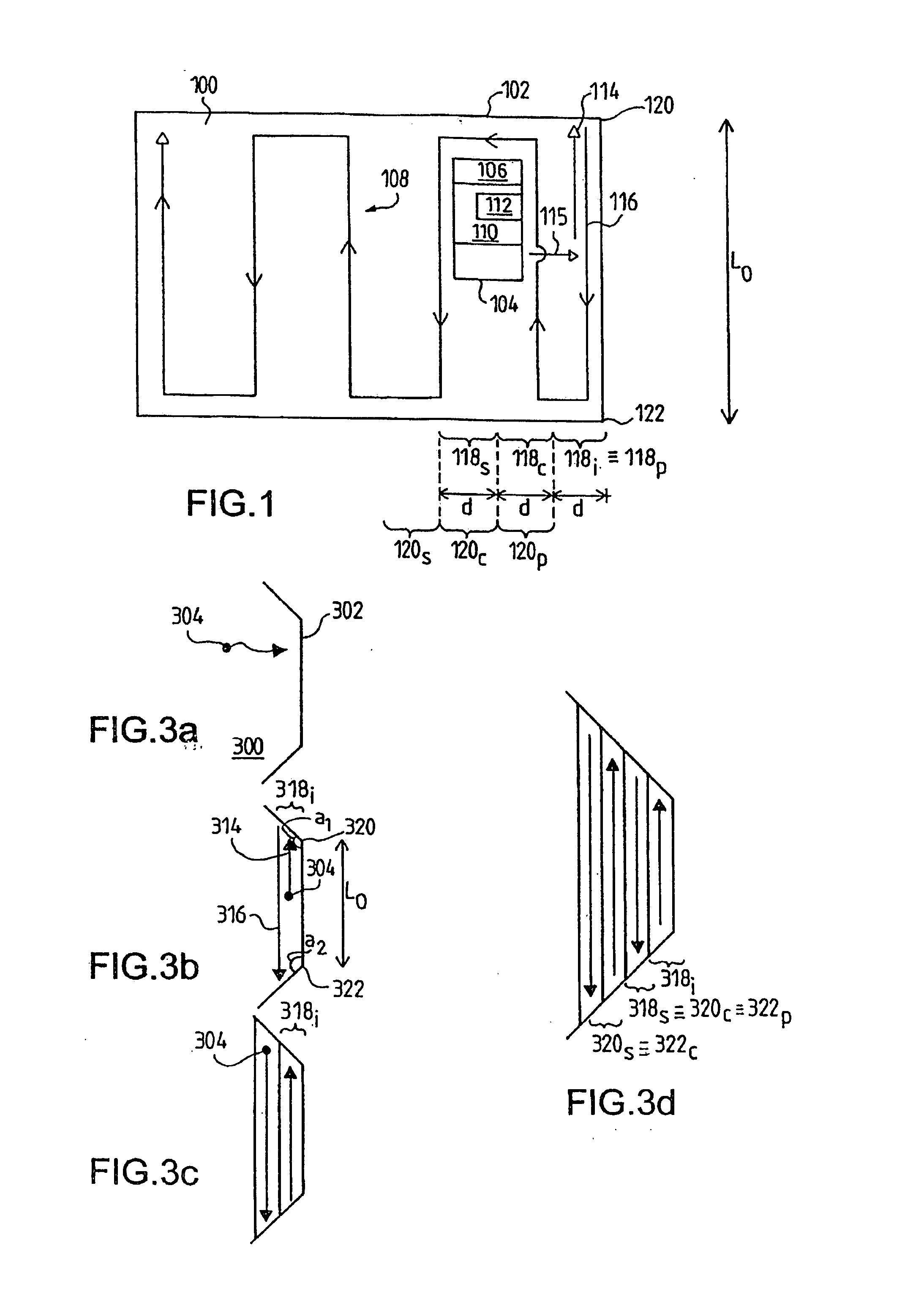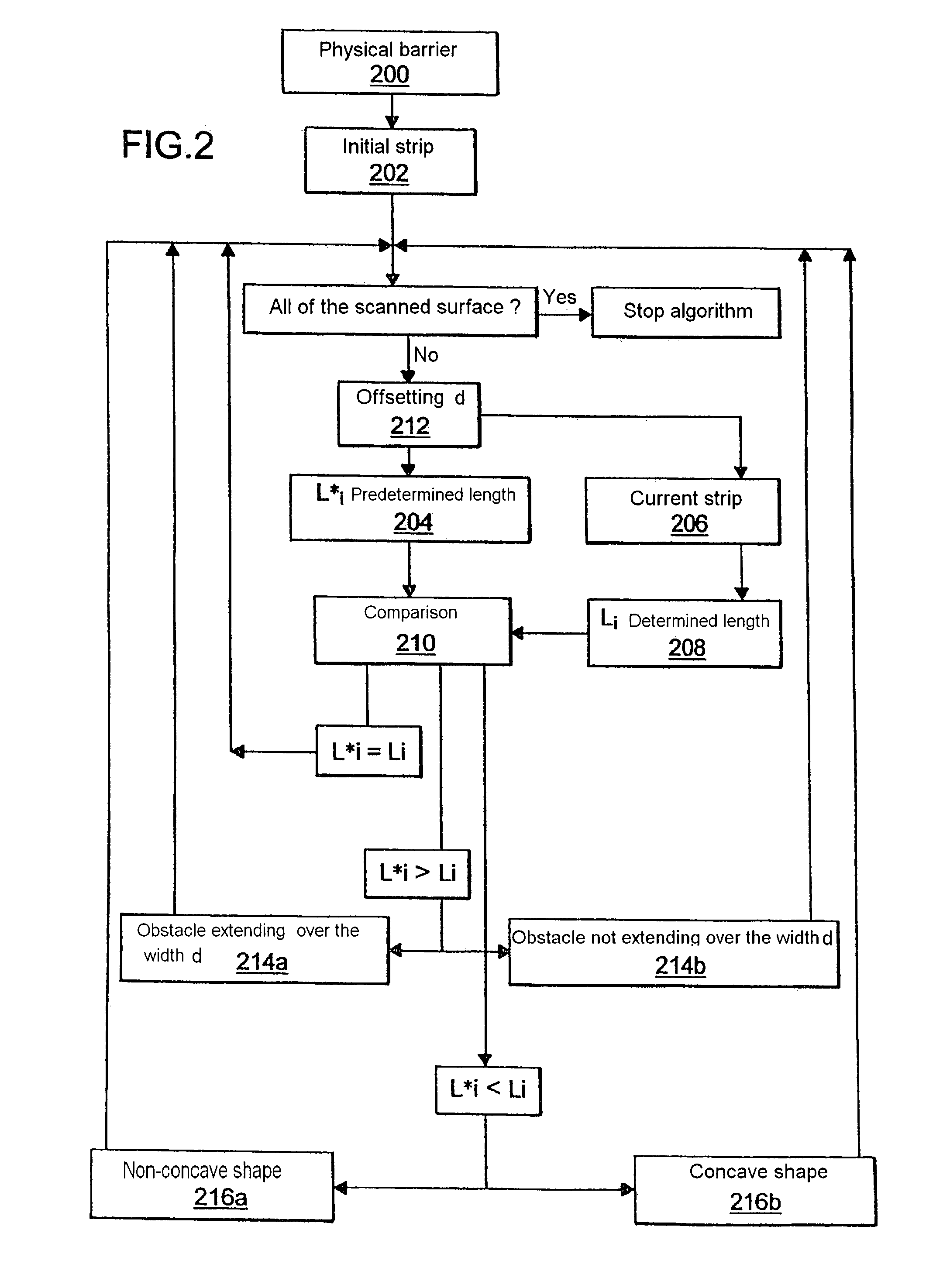Automatic Surface-Scanning Method and System
a surface scanning and automatic technology, applied in the direction of distance measurement, process and machine control, instruments, etc., can solve the problems of accumulating errors over time, robots by integrating a series of relative positions, and not being suitable for mass production equipment creation
- Summary
- Abstract
- Description
- Claims
- Application Information
AI Technical Summary
Benefits of technology
Problems solved by technology
Method used
Image
Examples
Embodiment Construction
[0107]In the description of the invention given below, we are considering a complex surface 100 (FIG. 1), that is one which, for example, may include irregularities and / or variations of gradient, and delimited at least partially by a physical barrier 102 such as a wall or a gap or change of direction in the complex surface.
[0108]The nature of this surface, which can be flat and / or warped, varies as a function of the application in which a robot 104 according to the invention is used. Thus, such an application can relate to a robot which is used to treat wild or cultivated land, to a vacuum-cleaning robot, to a robotic lawn mower, to a robot employed to wash horizontal or inclined walls, particularly of the glazed or ceiling or roof type, or indeed to a robot for the decontamination of complex contaminated surfaces.
[0109]Furthermore, this surface can include one or more obstacles which, similarly to the physical barrier, limit the movement of the robot requiring to scan this surface,...
PUM
 Login to View More
Login to View More Abstract
Description
Claims
Application Information
 Login to View More
Login to View More - R&D
- Intellectual Property
- Life Sciences
- Materials
- Tech Scout
- Unparalleled Data Quality
- Higher Quality Content
- 60% Fewer Hallucinations
Browse by: Latest US Patents, China's latest patents, Technical Efficacy Thesaurus, Application Domain, Technology Topic, Popular Technical Reports.
© 2025 PatSnap. All rights reserved.Legal|Privacy policy|Modern Slavery Act Transparency Statement|Sitemap|About US| Contact US: help@patsnap.com



